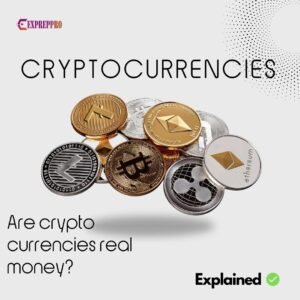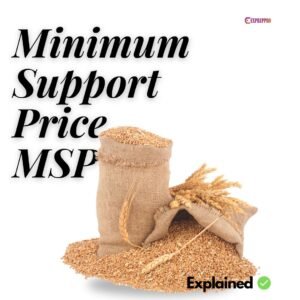
Inflation is a sustained rise in the price of goods and services in an entire economy. Inflation erodes the purchasing power of money. It affects the common person more because, due to inflation, they will be compelled to spend more of their income on their consumption.
The case of Zimbabwe is an example of inflation. The inflation rate is raised on a daily basis. At one point, it became uncontrollable. Hyperinflation got so bad that the government was forced to issue a 100 trillion Zimbabwean dollar note. The value erosion eventually forced the country to withdraw its currency and start over.
Medieval Blame
Sometimes, inflation went out of control because the government could not find the real reasons. This was the case right from medieval times. For example, in medieval days, witches were blamed for inflation. In ancient Rome, Romans blamed their on Christians. Nazi party blamed Jewish bankers and shopkeepers.
Case Study of Zimbabwe Inflation
What is the price of bread in India? It will be in between case studies of Zimbabwe inflation of 30Rs to 50RS. However, the case was different in Zimbabwe during its notorious inflation period.
In 2014, Zimbabwe had an unimaginable inflation rate of 79.6 billion per cent. In India in 2014 (January), it was 9.35 per cent in the urban areas and 8.09 per cent in rural areas. In the USA, the average inflation rate was 1.6 per cent and in Germany, the average rate in the same period was 0.91 per cent.

In Zimbabwe, prices increased day by day, and it was equivalent to a price increase of 98 per cent per day. The government tried to adjust the prices several times each day.
At one point, a loaf of bread cost 550 million Zimbabwean dollars. The salary was in trillions. Overnight, people became millionaires, but in reality, their currency became useless. It took 621,984,228 Zimbabwean dollars to purchase one US dollar.
To handle the situation, the government started to print more currency and enacted price controls. This led to shortages and black market trade.
At last, the government abandoned its own currency and allowed its citizens to use foreign currencies like the US dollar and South African Rand.
Types Of Inflation
Depending on the inflation rate, inflation can be divided into creeping inflation, Trotting inflation, Galloping inflation, and hyperinflation.
Creeping Inflation
When prices rise between one per cent to two per cent or less, then this type of inflation is called Creeping inflation.
It is good for the economy, and it is manageable.
Mild inflation makes people believe that prices will go up, so consumers buy goods today to beat increased prices that may occur in future. At the same time, traders make reasonable profits, encouraging them to invest more.
Hyperinflation
When a price rise is beyond the manageable limit or above fifty per cent in a month, then it is called hyperinflation. For example, Zimbabwe’s inflation and inflation occurred during the American Revolutionary War. This revolution ultimately led to the collapse of the value of the continental dollar.
It is reported that from the late 18th century to the 2000s, fifty-six episodes of hyperinflation involving nearly 40 countries or regimes have been recorded.
At least 16 countries have witnessed at least one hyperinflationary situation between 1800 and 2008.
It is the extreme case that demonstrates macroeconomic imbalances. The domestic currency loses its value against other currencies.
So, in this case, the domestic currency will no longer be used as a unit account for transactions.
The domestic currency will no longer used as a store of value.The domestic currency will be substituted by a stable currency even in cash transactions. During the hyperinflation period, the relation between the average inflation rate and corresponding GDP growth rates becomes conspicuously negative.
Hyperinflation Cases Comparison
For example, in the case of Nicaragua, when the inflation rate recorded a rate of 851.56, their growth rate was -2.89 per cent, but in Brazil, the case was different. When Brazil’s inflation rate reached 823.3, its growth rate was 1.96 per cent ( which was not negative).
Another example is Ukraine and Angola. When the inflation rate of Ukraine reached a level of 876, its growth rate dived into a rate of -9.20. But in the case of Angola, when the inflation rate reached 961, their growth didn’t go negative. It was 1.49 per cent.
Ways To Measure Hyperinflation Effectively
There are three ways to measure hyperinflation effectively.
- The rate is measured on a monthly or even daily basis, and the corresponding rate is calculated as a compounding rate.
- How long does it take the price level to decrease for a given value of the inflation rate?
- How long does it take to add a zero to the price index? It will give an idea of when the currency will likely be denominated.
Types Of Inflation According To Causes
Demand-Pull Inflation
This type of inflation arises when there is an increase in demand in the growing economy with low unemployment.
In short, this situation can be described as too much money chasing too few goods.
People consume more, creating upward pressure on the general price level because production cannot cope with increasing demand. This happens when the economy is operating above capacity. The difference between actual and potential output is called the inflationary gap.
Suppose, as a consumer, we anticipate an onion or petrol price rise; what will be our first action to counter it? Yes, will purchase it earlier.
If people anticipate a price rise in the future, they will purchase to take advantage of the current lower prices. This action will stimulate demand, which results in higher prices.
Demand-pull inflation can be caused by an increase in the money supply.
The excess demand pressure can be created by either Domestic or Imported factors.
If domestic, it can belong to either monetary excess demands or non-monetary excess demand. If the increase in government spending is financed by printing money, the result will be monetary excess demand. If it is financed by increasing taxes or borrowing, then the result is non-monetary excess demand.
Suppose the central bank reacts by increasing the money supply by providing money in response to an increase in demand. The excess demand created will be monetary. Otherwise, it is non-monetary excess demands.
Demand Inflation And Import Ways
Demand inflation can be imported in three different ways
- Trade
- Capital movements
- Migration
Trade
Trade effects occur whenever a change in exchange rate, reduction of tariffs and inflation in other countries( foreign inflation). In case of depreciation of domestic currency, domestic products will become cheaper in foreign markets.
The reduction of trade tariffs will display the same effect as currency depreciation. In case of foreign inflation, imported goods will become more expensive than domestic products.
Capital Movements
Capital movements can result in demand inflation if foreign capital is used to finance domestic expenditure. Here, the additional money supply may allow banks to lend more.
Migration
Excess demand may also result from foreign migrating labour.
Cost-Push Inflation
Inflation caused by a supply decrease is called cost-push inflation or supply shock inflation.
When companies face rising input costs, like increases in wages or raw materials prices, to save their profit margin, they pass the increased cost of production to the consumer in the form of a price rise.
Cost-push inflation may arise from foreign inflation and exchange rates due to price rises in imported goods and domestic currency depreciation.
Cost-push inflation can occur when demand is relatively inelastic.
Wage-Price Spiral
A price increase can lead to higher wage demands because workers need to maintain their living standards. This forces companies to maintain profits by increasing prices, which puts further upward pressure on wages. This vicious cycle is known as the wage-price spiral.
In short, higher wages lead to higher prices, and higher prices lead to higher wages.
Combined Demand-Cost Inflation or Nordic Inflation Model
This combined model is also known as a Nordic model of inflation and cannot be used to explain worldwide inflation.
The economy consists of sheltered sectors and exposed sectors.
The sheltered sector consists of private sector services, good for which tariffs or transport costs are an effective barrier to trade and most of the public sector.
The exposed sector encompasses exports and home-produced goods that are close substitutes for imports.
Exposed sectors of a small open economy are governed by supply and demand. If the exchange rate is fixed, money wages are determined by world prices and domestic productivity. The competitive pressure results in productivity growing faster in the exposed sector.
Shelter sector workers receive higher money wages than the exposed sector, and companies pass on these increases in prices.
So, the prices in the sheltered sectors rise at a higher rate, but in the case of the exposed sector, the rise will be at the world rate.
By comparing both, prices in a small open economy will rise faster than the world average.
Unfortunately, this inflation model that combines both cost and demand does not apply to the whole world.



